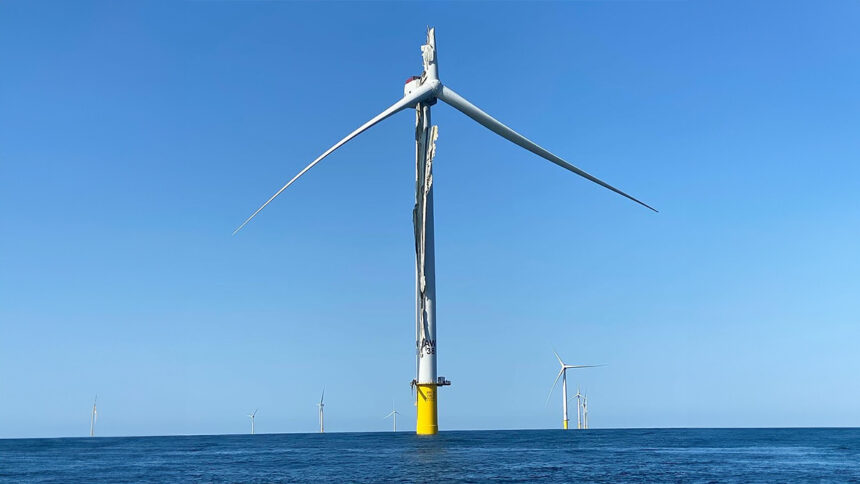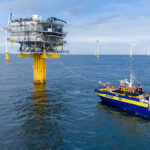A wind turbine at the largest offshore wind farm in the US broke just weeks after opening spewing waste into the ocean
At the end of March 2024, we wrote that the Spanish and Danes were building the largest offshore wind farm in the US, Vineyard Wind 1, which was in the advanced stages of turbine installation and connection, and we also reported then that the same developers had decided to build another wind farm, Vineyard Wind 2, next door. Well, in the meantime, the Vineyard Wind 1 wind farm was connected and officially opened for operation on June 25, 2024, making it the largest active offshore wind farm in the US. Less than a month after opening, however, a wind turbine suffered major damage, with one of its propeller blades breaking off and spewing debris into the ocean, which washed ashore. Now the turbine manufacturer is investigating the turbine and says it has found a problem with the compliance of the materials the blades are made of, which will lead to the need to investigate all turbines of this model it has installed around the world or in the process of manufacturing.
The manufacturer of the turbines is GE Vernova, and the turbine is the 13 MW Haliade-X, a relatively new model in production, which is designed without a gearbox, instead having a generator driven directly by the turbine propeller, with variable speed. This design feature puts more pressure on the balancing of the final current in such a wind farm, but at the same time the lack of a gearbox gives a greater range of forces that the turbine has to withstand, as it cannot adjust its own wind resistance, unlike those with gearboxes. On the other hand, such a design can generate more efficiency due to minimization of transmission losses and the larger rpm range that the generator can sustain.
Thus, on July 13, 2024, a little over two weeks after its inauguration, one of the turbines had a propeller blade broken and shattered into multiple pieces, resulting in the turbine generator jamming, and much of the debris washing into the ocean, some of it washing ashore a few days later. The curious thing is that the propeller blade did not break in bad weather or high winds, but in absolutely normal, calm conditions, which clearly points to a problem with that turbine.
The coastguard secured the areas where the turbine debris was floating and a clean-up operation was also arranged. Some of the debris is very large and requires special equipment to recover it, while smaller debris has washed ashore.
Initial comments after the incident, published in the local press on the US east coast, suggested that the broken turbine blade was a retrofit, after the original blade had been damaged in the process of installing the turbine. The team installing the turbine would have brought in a spare blade afterwards, which the press says may have been different. If these reports were to be confirmed, it would be totally irresponsible of those who fitted a different blade to such a propeller, and it would be perfectly explainable why this unbalanced propeller ended up breaking.However, GE Vernova have not confirmed this option, and in their published explanation they only mention that they discovered a deviation in the composition of the material from which the broken blade was made. Preliminary results indicate that there may be too little adhesive in the composition of the material from which the blade is made, and that this may have reduced its structural strength. The turbine blade was manufactured at GE Vernova’s plant in Gaspe, Canada, so the manufacturer has now launched an internal investigation and a review of quality assurance procedures at that plant.GE Vernova also says it will inspect all turbine blades of this model. So far only 150 of these blades have been manufactured for 50 turbines, with 10 of the turbines being installed at this wind farm, and another 11 turbines also being manufactured for this wind farm, but awaiting installation. The problem now is that these inspections will now put a pause on further installation of the next turbines of this model at Vineyard Wind 1 and Vineyard Wind 2, and that could cause the company to miss the contract deadline for both wind farms and thus be required to pay penalties. The folks at GE Vernova say they are already talking to Massachusetts officials about these risks and trying to reach an agreement with them.However, GE Vernova was keen to reassure the public that the problem is in the quality of the manufacturing of that turbine, and possibly others if they are discovered, but not in the actual design and construction of the model, which may have created a design problem.
Via: Infraser.ro







